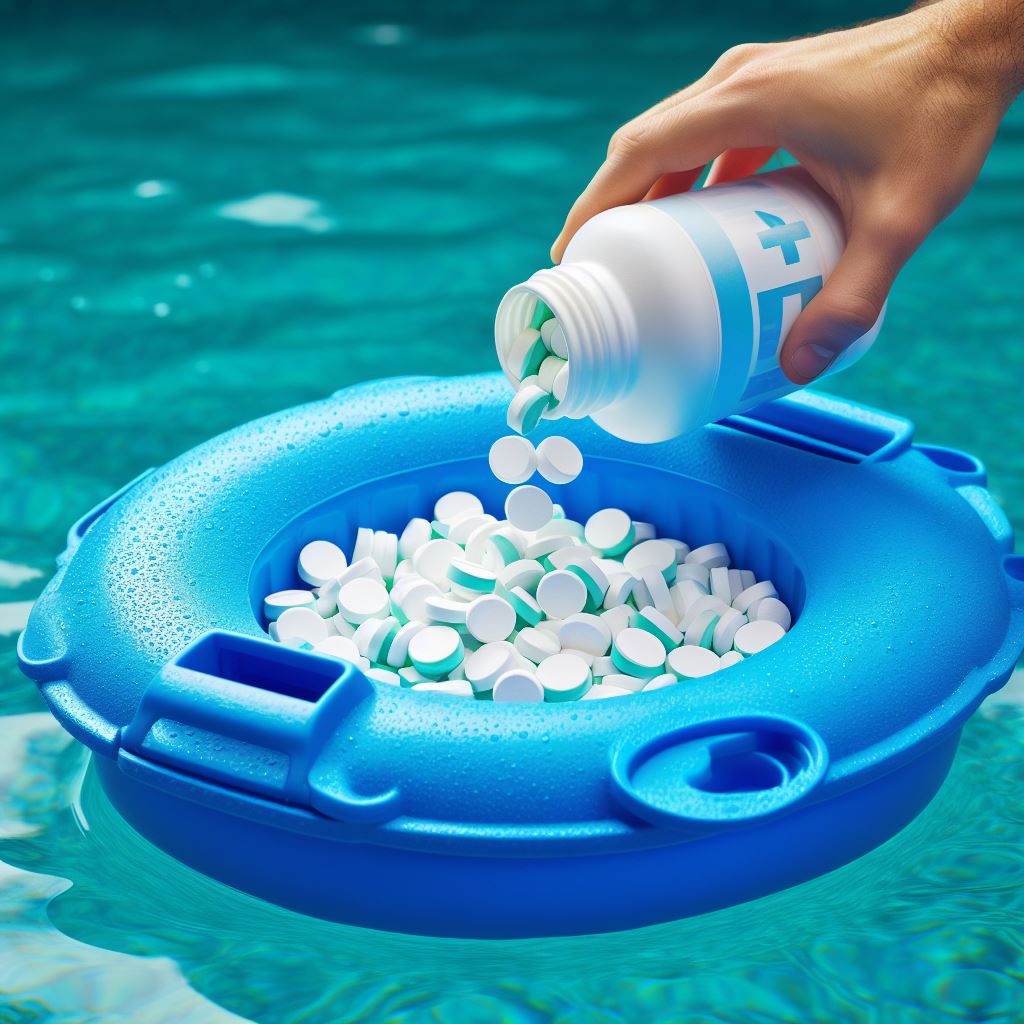Ensuring clean and safe pool water is crucial for any pool owner. Adding chlorine, an effective pool disinfectant, is key to maintaining optimal water quality. Chlorine can be added in tablet, granular, or liquid form, each requiring specific methods of application. This guide provides detailed instructions on how to appropriately use these different forms of chlorine to manage and maintain your pool effectively.

The Importance of Water Testing
Before adding any type of chlorine, it is essential to test the water. Proper water testing helps determine the current levels of free chlorine, pH, and total alkalinity, key parameters that ensure the effectiveness of chlorine. Ideal free chlorine levels should be maintained between 1 and 3 PPM. Testing also includes measuring the pH, which should be between 7.2 and 7.8, and total alkalinity, which helps stabilize the pH and prevent fluctuations.
Adding Chlorine Tablets
.Chlorine tablets are popular due to their ease of use and slow-release properties, making them ideal for ongoing disinfection of large pools.
Using Floating Dispensers: Place chlorine tablets in a floating dispenser that moves around the pool, gradually dissolving and releasing chlorine. Regular checks are necessary to ensure even dissolution and prevent areas of concentrated chlorine.
Using Automatic Chlorinators: For more uniform and continuous dispersal, connect an automatic chlorinator directly to the pool’s circulation system. Load the appropriate amount of chlorine tablets into the chlorinator, adjust the settings based on the pool’s usage and water quality, and restart the system.
Adding Granular Chlorine
Granular chlorine is suitable for rapid adjustment of pool chlorine levels, often used for initial treatment at the start of the season or after heavy pool use.
Pre-Dissolving: Before adding directly to the pool, dissolve the granular chlorine in a bucket of water. This helps prevent the granules from settling at the bottom of the pool and potentially damaging the lining.
Even Distribution: Pour the dissolved chlorine solution into the pool at multiple locations, particularly where the water circulation is strong, to help distribute the chlorine evenly and quickly.
Adding Liquid Chlorine
Liquid chlorine is effective for quickly increasing the chlorine levels and is especially useful in emergency situations.
Direct Addition: Measure the required amount of liquid chlorine and slowly pour it near the pool’s return lines while the pump is running. This helps the chlorine mix quickly and evenly throughout the pool.
Using a Stabilizer: Since liquid chlorine does not contain cyanuric acid (CYA), it may be necessary to add a stabilizer to protect the chlorine from rapid degradation by sunlight.
Comprehensive Management and Safety Tips
Regardless of the form of chlorine used, follow safe handling practices. When dealing with chemicals, wearing appropriate personal protective equipment like gloves and goggles is crucial to prevent accidental contact with skin or eyes, which could cause irritation or injury.
Regular Testing and Adjustment: Managing pool water quality is an ongoing process. Regularly testing for chlorine concentration, pH, and alkalinity is vital to ensure the water remains in optimal condition and prevents issues related to water quality.
Avoid Over-chlorination: While chlorine is an effective disinfectant, excessive use can lead to water that is too harsh and may damage the pool’s structural materials or cause discomfort to swimmers. Calculate the required amount of chlorine accurately and adjust it timely based on actual water conditions.
Conclusion
Properly adding chlorine to your pool is essential for maintaining water safety, cleanliness, and ensuring a healthy swimming environment for swimmers. Choosing the right type of chlorine and following the correct application methods maximizes the disinfecting effects of chlorine while minimizing potential risks to the environment and health. Remember to perform regular water quality tests and maintenance to keep your pool a safe and enjoyable place.


